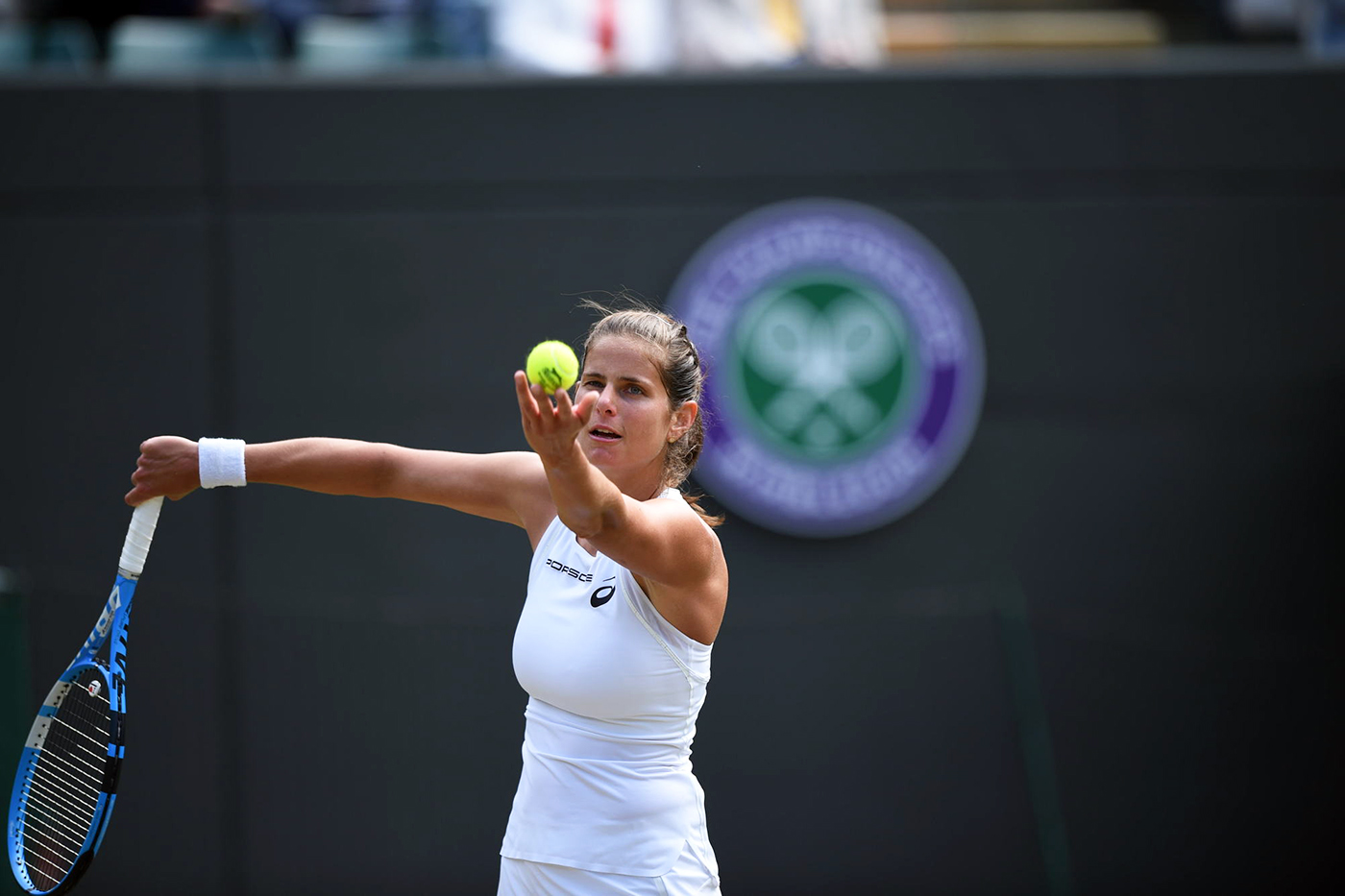The chance of an upset
When Serena Williams reaches the advanced stages of a tournament, she automatically becomes the favourite to lift the title; that is a given.Numbers, history, form, psychological edge…The odds seem heavily stacked in Williams’ favour as she enters her 35th Grand Slam semi-final. But here are some reasons why her Wimbledon last-four opponent, Julia Goerges, has a chance to pull off the upset.
That serve
One of the most significant improvements in Goerges’ game over the last two years has been her serve. The 29-year-old is not just the ace leader at Wimbledon this Fortnight (hit 44), she headlines the women’s Tour in that department, striking 301 aces in total, 47 more than usual leader Karolina Pliskova.
Goerges has won 77 per cent of her first-serve points this Wimbledon and has held 83 per cent of her service games – she trails only Williams in both those categories among the four semi-finalists.
We’ve seen how a big server like Camila Giorgi pushed Williams to three sets in the quarter-finals. Goerges will try to utilise that weapon when she faces off with the American on Thursday.
The Paris loss
Goerges has lost all three of her previous meetings with Williams, including a third round at Roland-Garros just five weeks ago. She’s never taken a set off of the 23-time Grand Slam champion. One could argue that recent defeat could give the No.13 seed less reason to believe in her chances against Williams, but when a rematch comes around so quickly like that, it gives an opportunity for the loser to rectify some of the mistakes from the previous clash, and make adjustments for the next one.
It’s a tricky situation for both players on court, and even though Goerges hasn’t had much success on grass in the past, her big serve and forehand should actually work better on this surface compared to the clay.
Tougher path
Goerges has spent three more hours on court than Williams these past 10 days, and has faced tougher opposition, at least from a statistical standpoint: the average ranking of the German’s opponents is 50, compared to 95 for Williams.
Three of Williams’ victories this Wimbledon have come against players ranked outside the top 100, and perhaps Goerges arrives at this semi-final more match-hardened.
Goerges’ last three rounds were triumphs over Barbora Strycova, Donna Vekic, and Kiki Bertens. She must have got a massive confidence boost from those successes.
High risk, high reward
Goerges is enjoying the best 12-month stretch of her career. She took a big risk at the start of 2016 and changed her entire team, ending her seven-year partnership with coach Sascha Nensel and hiring Michael Geserer and Matthias Mischka.
She relocated from the north of Germany to Regensburg, near Munich, and credits these drastic changes to her recent progress. She took a risk and it paid off.
A maiden place in the top 10 of the world rankings came for Goerges last February and she has won three titles from seven finals reached within the past 13 months.
After losing in the Wimbledon first round on her five previous visits to south-west London, she is now in the semi-finals at SW19. She credits adding David Prinosil to her team during the grass season last year to her breakthrough on the turf.
Goerges has proven that she is willing to do whatever it takes to keep improving, and if she applies her high-risk mentality on the court against Williams in their semi-final, she might just walk away with a precious reward.

